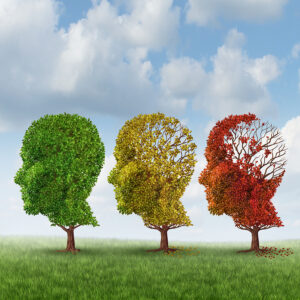3 Ways the Brain Changes with Alzheimer’s
 The brain is an amazing organ. It contains a complex system of billions of neurons, which are cells that process the information coming into the brain and transmit it to other parts of the brain using electrical signals and chemicals. When an older adult develops Alzheimer’s disease, these systems break down causing memory loss and behavioral changes. The brain itself undergoes numerous physical changes that cause the symptoms. Understanding how the brain changes can help you to better understand what is happening in your aging relative’s body and what you can expect as the disease progresses. Below are 3 brain changes that occur with Alzheimer’s disease.
The brain is an amazing organ. It contains a complex system of billions of neurons, which are cells that process the information coming into the brain and transmit it to other parts of the brain using electrical signals and chemicals. When an older adult develops Alzheimer’s disease, these systems break down causing memory loss and behavioral changes. The brain itself undergoes numerous physical changes that cause the symptoms. Understanding how the brain changes can help you to better understand what is happening in your aging relative’s body and what you can expect as the disease progresses. Below are 3 brain changes that occur with Alzheimer’s disease.
#1: The Brain Shrinks
It’s normal for the brain to get a little smaller with age. However, the shrinkage is more pronounced with Alzheimer’s disease. Normal aging doesn’t cause neurons to die off, but Alzheimer’s disease does. In addition, brain cells die off. The combination of the loss of neurons and brain cells causes the brain to become significantly smaller than a healthy brain. When the cells in the hippocampus are affected, the older adult’s short-term memory is impacted. Then, when the disease spreads into the outer layer of the brain, called the cerebral cortex, the senior will have difficulty making good judgements and communicating. They will also experience behavioral changes, including outbursts. As more and more of the brain’s tissues degenerate, the symptoms of the disease worsen until the older adult is incapable of performing daily activities on their own.
#2: Plaques and Tangles Form
Plaques and tangles are one of the hallmark signs of Alzheimer’s disease. Plaques are bunches of protein that collect between nerve cells. They are created when proteins called beta-amyloids gather together. They come from bigger proteins that are found in the fatty membrane that surrounds nerve cells. Because beta-amyloids are sticky, they clump together into plaques. Smaller collections of beta-amyloids can block the signals that travel between cells and may also signal the immune system to cause inflammation.
Tangles develop in nerve cells that are already dead or are dying. They consist of strands of protein that don’t belong there. They damage a transport system for the cells that is comprised of protein. This keeps important supplies from reaching the brain’s cells and causes them to die.
#3: Inflammation is Present
Alzheimer’s disease causes glial cells to collect in the brain. Usually, these cells keep waste products from building up in the brain. With Alzheimer’s disease, the glial cells lose their ability to clean debris out of the brain. Scientists are still studying what makes the glial cells break down.
As your aging relative’s brain changes and the symptoms of Alzheimer’s disease get worse, home care can help to keep them safe and happy in their homes. Home care providers can help them with daily activities that become too difficult because of cognitive changes, like brushing their teeth and getting dressed. Home care providers can also involve them in activities that support their sense of purpose and bring them enjoyment.
Sources
https://www.nia.nih.gov/health/what-happens-brain-alzheimers-disease
https://www.brightfocus.org/alzheimers-disease/infographic/progression-alzheimers-disease
https://www.alz.org/alzheimers-dementia/what-is-alzheimers/brain_tour_part_2
If you or an aging loved one are considering home care services in Plainsboro, NJ, please contact the caring staff at Care Street Home Care Serving Somerset and Middlesex/Union Counties today. Call (732) 607-8870.
- Six Ways Senior Home Care Improves Independence - April 19, 2024
- How To Balance Caregiving Stress and Being Nurturing - April 12, 2024
- Six Ways Home Care Assistance Prolongs Abilities for Seniors - April 4, 2024
